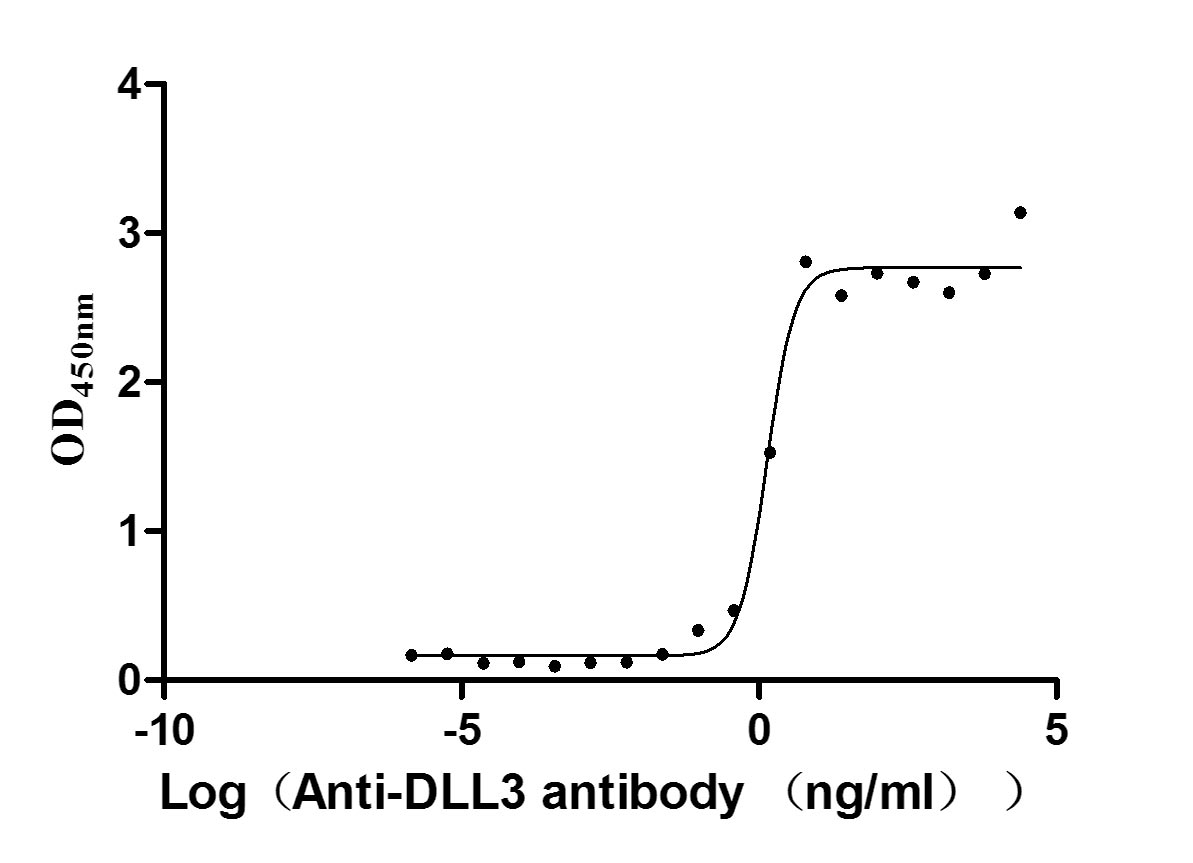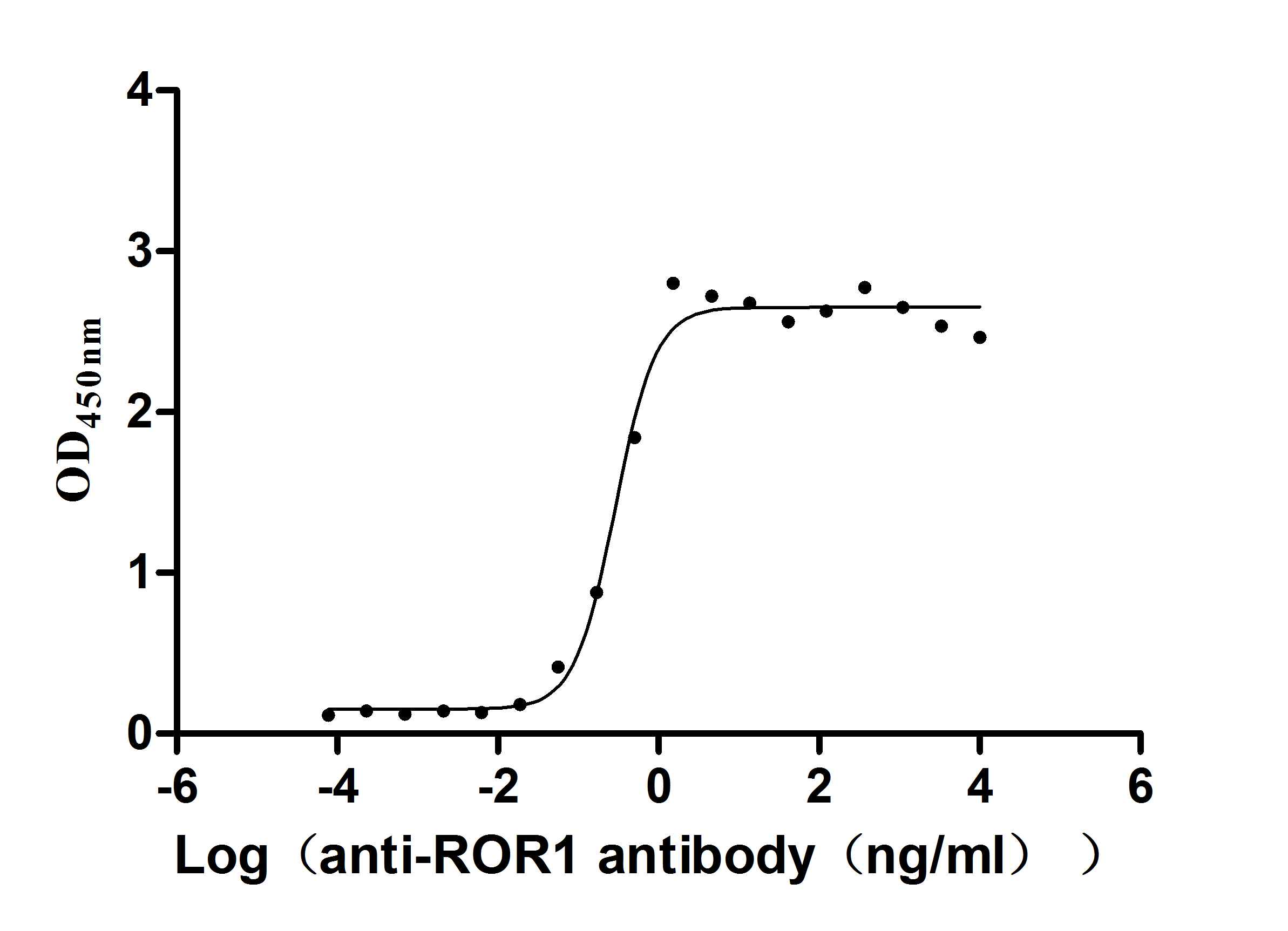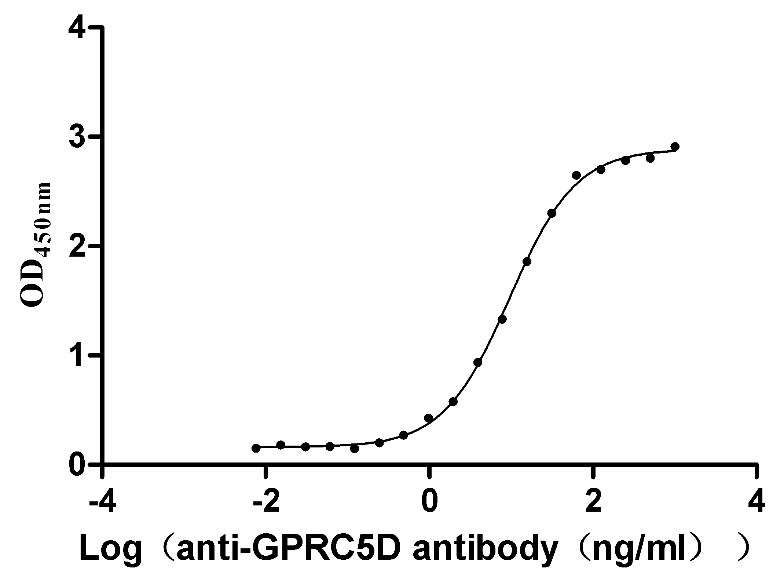Recombinant Mouse Insulin-induced gene 2 protein (Insig2), partial
-
中文名称:小鼠Insig2重组蛋白
-
货号:CSB-YP842029MO1
-
规格:
-
来源:Yeast
-
其他:
-
中文名称:小鼠Insig2重组蛋白
-
货号:CSB-EP842029MO1
-
规格:
-
来源:E.coli
-
其他:
-
中文名称:小鼠Insig2重组蛋白
-
货号:CSB-EP842029MO1-B
-
规格:
-
来源:E.coli
-
共轭:Avi-tag Biotinylated
E. coli biotin ligase (BirA) is highly specific in covalently attaching biotin to the 15 amino acid AviTag peptide. This recombinant protein was biotinylated in vivo by AviTag-BirA technology, which method is BriA catalyzes amide linkage between the biotin and the specific lysine of the AviTag.
-
其他:
-
中文名称:小鼠Insig2重组蛋白
-
货号:CSB-BP842029MO1
-
规格:
-
来源:Baculovirus
-
其他:
-
中文名称:小鼠Insig2重组蛋白
-
货号:CSB-MP842029MO1
-
规格:
-
来源:Mammalian cell
-
其他:
产品详情
-
纯度:>85% (SDS-PAGE)
-
基因名:Insig2
-
Uniprot No.:
-
别名:Insig2; Insulin-induced gene 2 protein; INSIG-2
-
种属:Mus musculus (Mouse)
-
蛋白长度:Partial
-
蛋白标签:Tag type will be determined during the manufacturing process.
The tag type will be determined during production process. If you have specified tag type, please tell us and we will develop the specified tag preferentially. -
产品提供形式:Lyophilized powder
Note: We will preferentially ship the format that we have in stock, however, if you have any special requirement for the format, please remark your requirement when placing the order, we will prepare according to your demand. -
复溶:We recommend that this vial be briefly centrifuged prior to opening to bring the contents to the bottom. Please reconstitute protein in deionized sterile water to a concentration of 0.1-1.0 mg/mL.We recommend to add 5-50% of glycerol (final concentration) and aliquot for long-term storage at -20℃/-80℃. Our default final concentration of glycerol is 50%. Customers could use it as reference.
-
储存条件:Store at -20°C/-80°C upon receipt, aliquoting is necessary for mutiple use. Avoid repeated freeze-thaw cycles.
-
保质期:The shelf life is related to many factors, storage state, buffer ingredients, storage temperature and the stability of the protein itself.
Generally, the shelf life of liquid form is 6 months at -20°C/-80°C. The shelf life of lyophilized form is 12 months at -20°C/-80°C. -
货期:Delivery time may differ from different purchasing way or location, please kindly consult your local distributors for specific delivery time.Note: All of our proteins are default shipped with normal blue ice packs, if you request to ship with dry ice, please communicate with us in advance and extra fees will be charged.
-
注意事项:Repeated freezing and thawing is not recommended. Store working aliquots at 4°C for up to one week.
-
Datasheet :Please contact us to get it.
相关产品
靶点详情
-
功能:Oxysterol-binding protein that mediates feedback control of cholesterol synthesis by controlling both endoplasmic reticulum to Golgi transport of SCAP and degradation of HMGCR. Acts as a negative regulator of cholesterol biosynthesis by mediating the retention of the SCAP-SREBP complex in the endoplasmic reticulum, thereby blocking the processing of sterol regulatory element-binding proteins (SREBPs) SREBF1/SREBP1 and SREBF2/SREBP2. Binds oxysterol, including 22-hydroxycholesterol, 24-hydroxycholesterol, 25-hydroxycholesterol and 27-hydroxycholesterol, regulating interaction with SCAP and retention of the SCAP-SREBP complex in the endoplasmic reticulum. In presence of oxysterol, interacts with SCAP, retaining the SCAP-SREBP complex in the endoplasmic reticulum, thereby preventing SCAP from escorting SREBF1/SREBP1 and SREBF2/SREBP2 to the Golgi. Sterol deprivation or phosphorylation by PCK1 reduce oxysterol-binding, disrupting the interaction between INSIG2 and SCAP, thereby promoting Golgi transport of the SCAP-SREBP complex, followed by processing and nuclear translocation of SREBF1/SREBP1 and SREBF2/SREBP2. Also regulates cholesterol synthesis by regulating degradation of HMGCR: initiates the sterol-mediated ubiquitin-mediated endoplasmic reticulum-associated degradation (ERAD) of HMGCR via recruitment of the reductase to the ubiquitin ligase RNF139.
-
基因功能参考文献:
- Intracellular biosynthesis of lipids and cholesterol by Scap and Insig in mesenchymal cells regulates long bone growth and chondrocyte homeostasis. PMID: 29899135
- INSIG2 is a negative regulator of SREBP, and acute glucocorticoid treatment decreased active SREBP during refeeding or in livers of Ob/Ob mice, both systems of elevated SREBP-1c-driven lipogenesis. PMID: 27568546
- These results indicate that HIF-mediated induction of Insig-2 and degradation of HMGCR are physiologically relevant events that guard against wasteful oxygen consumption and inappropriate cell growth during hypoxia. PMID: 28416613
- the essential role of Insig1,2 proteins in the sterol homeostasis of enterocytes. PMID: 24337570
- Insig deficiency in skin causes accumulation of cholesterol precursors, and this impairs normal hair development PMID: 20090767
- Data show that REV-ERBalpha participates in the circadian modulation of SREBP activity, and the expression of SREBP target genes involved in cholesterol and lipid metabolism via the cyclic transcription of Insig2. PMID: 19721697
- Liver-specific mRNA for Insig-2 down-regulated by insulin: implications for fatty acid synthesis. PMID: 12624180
- a vitamin D response element in the murine Insig-2 promoter may have a role in the differentiation of 3T3-L1 preadipocytes PMID: 15528275
- Results define Insig proteins 1 and 2 as essential elements of the feedback inhibition system of cholesterol synthesis in mouse liver. PMID: 16100574
- Insig2 identified as a strong candidate susceptibility gene for total plasma cholesterol levelsin inbred mice strains PMID: 16126366
- Treatment of pregnant mice with the HMG-CoA reductase inhibitor lovastatin reduced sterol synthesis in Insig2-knockout embryos and reduced the pre-cholesterol intermediates ameliorating the clefting. PMID: 16955138
- A critical gene involved in cholesterol homeostasis, Insig-2, was induced when mice or cultured cells were treated with FXRalpha agonists or infected with constitutively active FXRalpha. PMID: 17440045
- Peroxisome deficiency causes a complex phenotype because of hepatic SREBP-1c,-2/Insig-2a,b dysregulation associated with endoplasmic reticulum stress PMID: 19110480
- Silibinin inhibits adipocyte differentiation through a potential up-regulation of insig-1 and insig-2 at an early phase in adipocyte differentiation. PMID: 19360322
显示更多
收起更多
-
亚细胞定位:Endoplasmic reticulum membrane; Multi-pass membrane protein.
-
蛋白家族:INSIG family
-
组织特异性:Expressed in liver, testis, kidney, spleen, intestine, brain and adrenal gland.
-
数据库链接:
KEGG: mmu:72999
STRING: 10090.ENSMUSP00000003818
UniGene: Mm.27136
Most popular with customers
-
Recombinant Human Delta-like protein 3 (DLL3), partial (Active)
Express system: Mammalian cell
Species: Homo sapiens (Human)
-
Express system: Mammalian cell
Species: Homo sapiens (Human)
-
Recombinant Human Intestinal-type alkaline phosphatase (ALPI) (Active)
Express system: Mammalian cell
Species: Homo sapiens (Human)
-
Recombinant Human G-protein coupled receptor family C group 5 member D (GPRC5D)-VLPs (Active)
Express system: Mammalian cell
Species: Homo sapiens (Human)
-
Express system: Mammalian cell
Species: Macaca fascicularis (Crab-eating macaque) (Cynomolgus monkey)
-
Recombinant Human Claudin-6 (CLDN6)-VLPs (Active)
Express system: Mammalian cell
Species: Homo sapiens (Human)
-
Recombinant Human Microtubule-associated protein tau (MAPT) (Active)
Express system: Mammalian cell
Species: Homo sapiens (Human)
-
Recombinant Human C-C chemokine receptor type 9 (CCR9)-VLPs (Active)
Express system: Mammalian cell
Species: Homo sapiens (Human)







-AC1.jpg)
-AC1.jpg)











